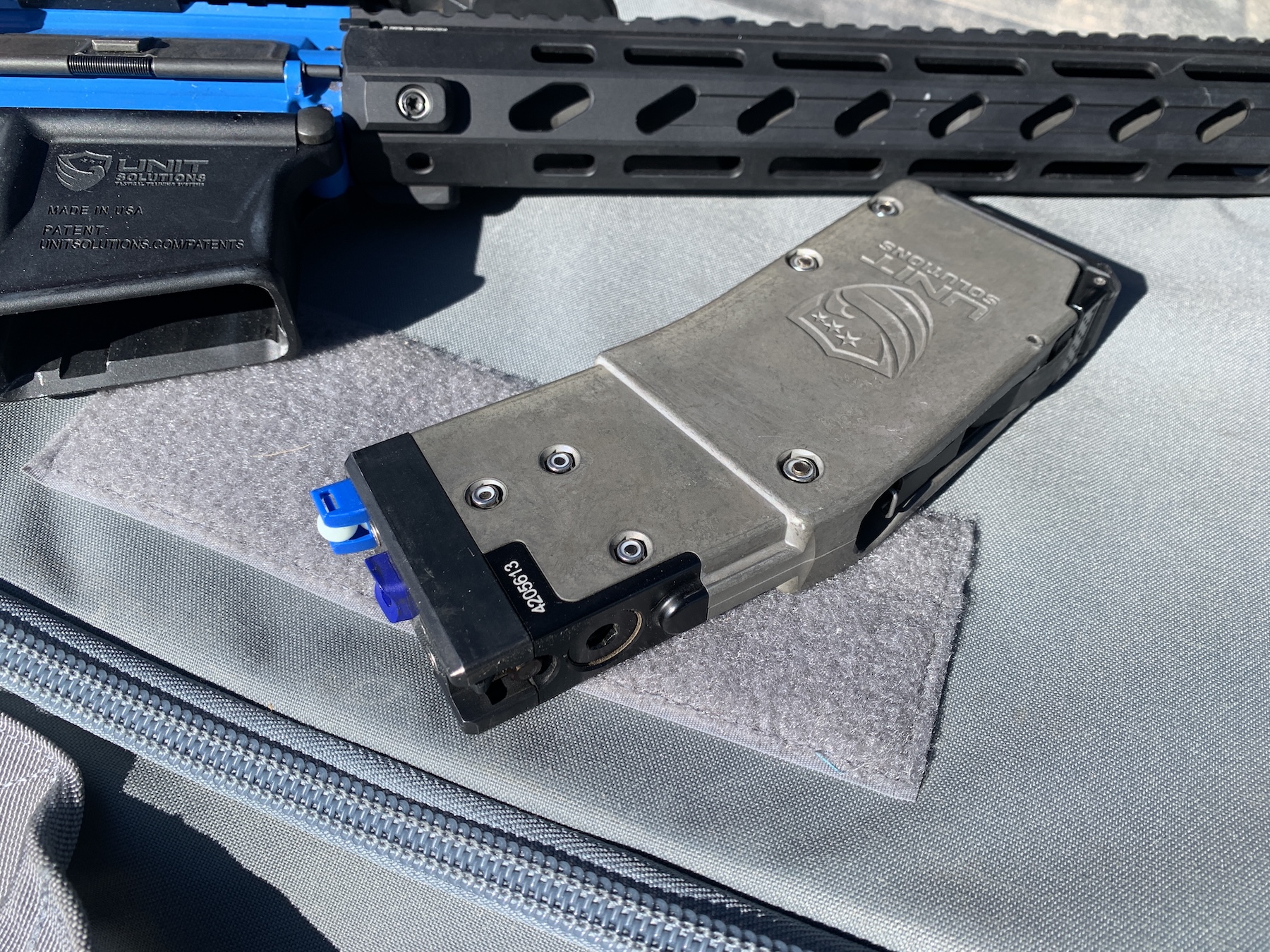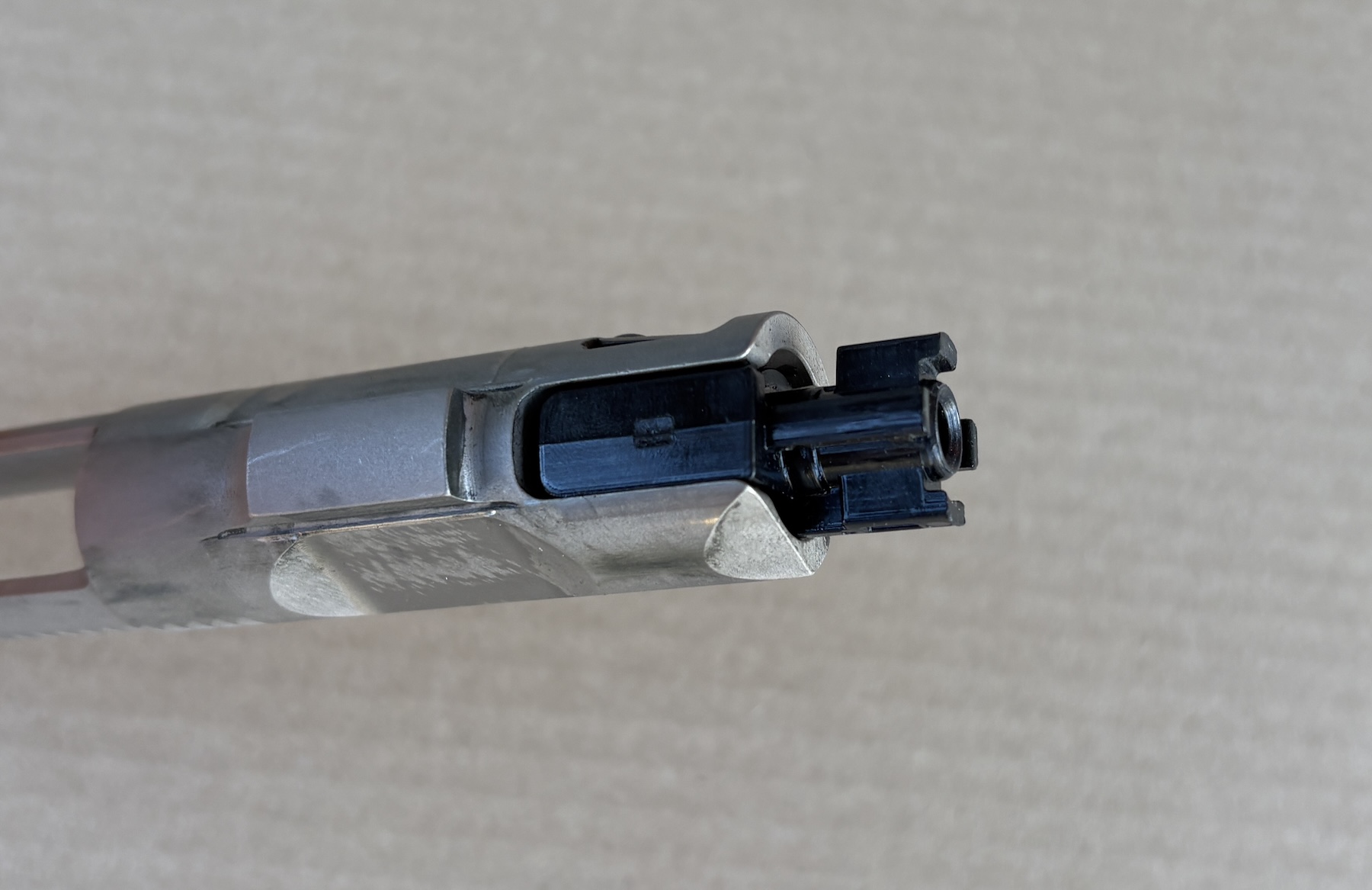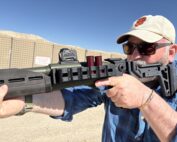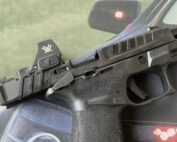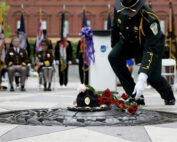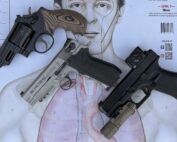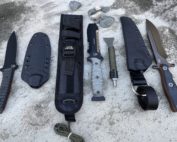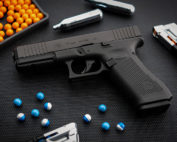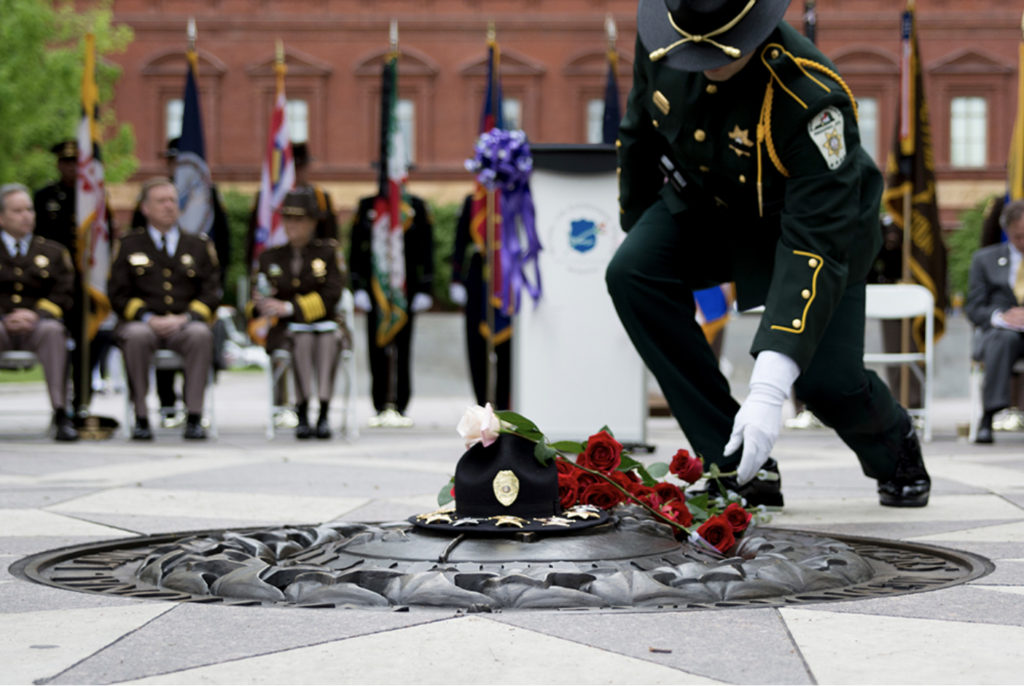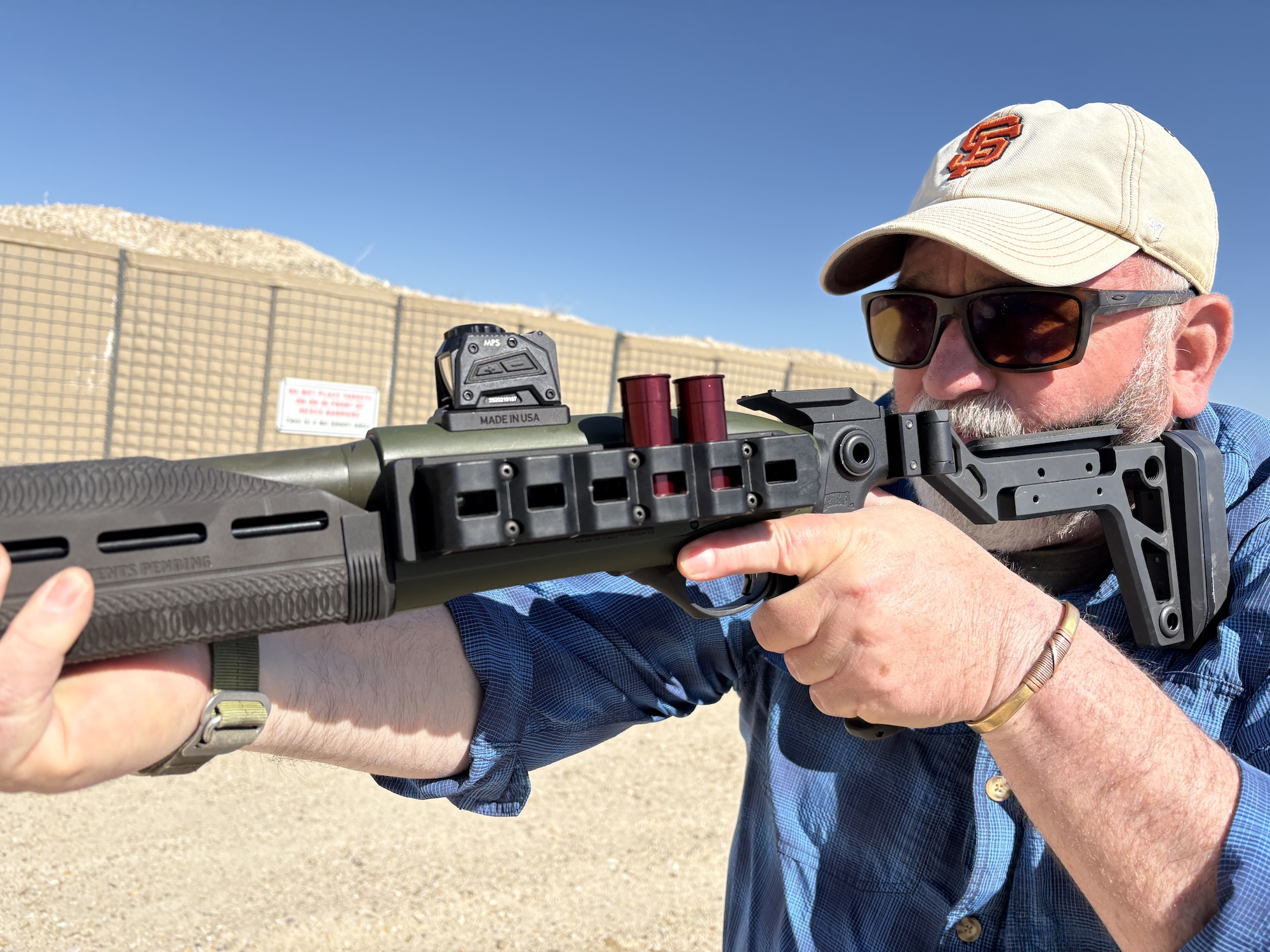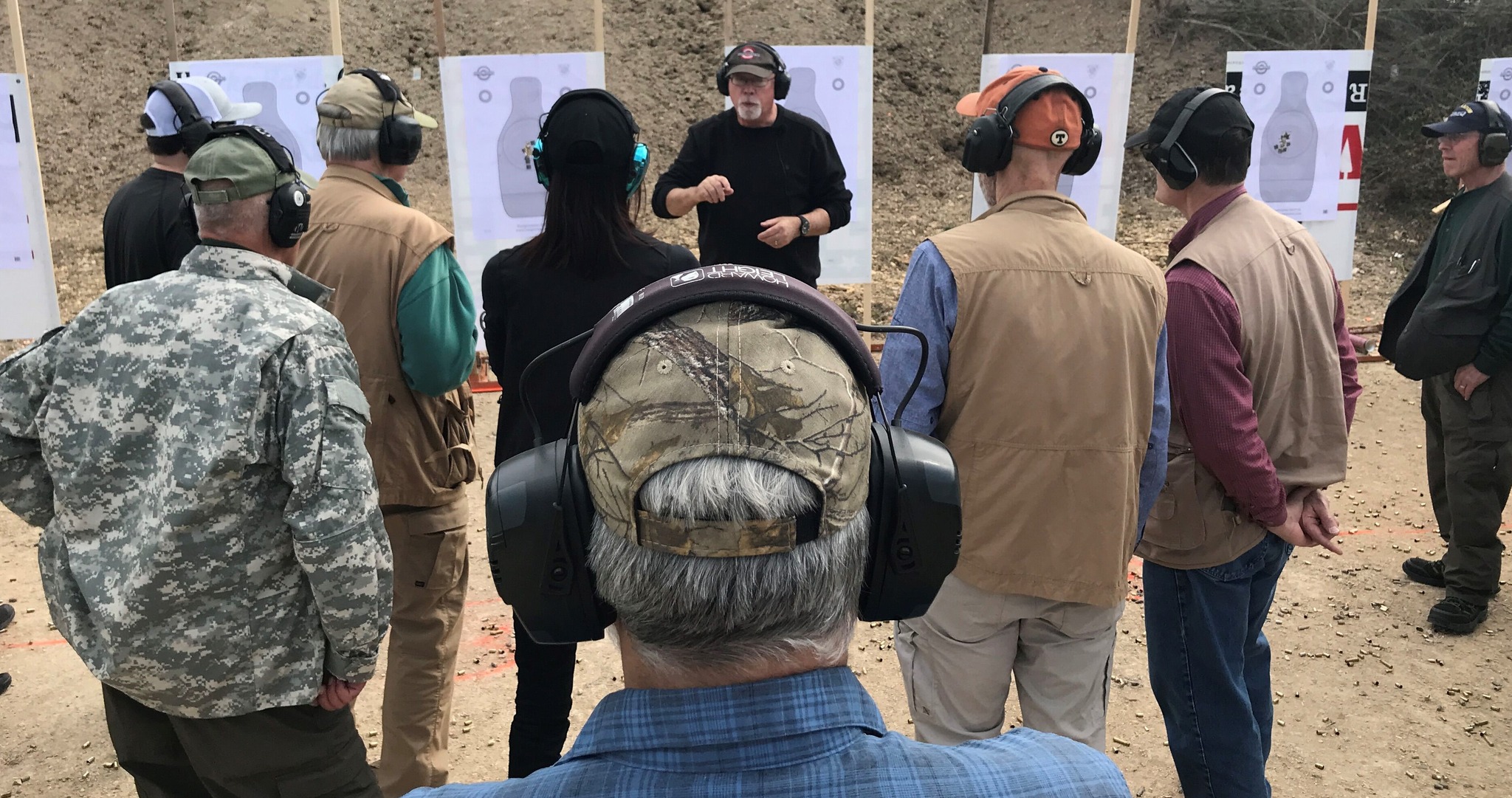
Feast_WhatCameWith_1922 4
The complete set-up.
Regardless of what research you look at regarding training related to deadly force, there is at least a nodding agreement on one thing –practitioners need scenario-based decision-making training. This training, often referred to as Force-on-Force, is at least as important as working on your skills mechanically with our tools.
The most recent study I’ve read on deadly force decision-making, which references the need for this training, is dated February 28, 2025.
There are a variety of classes that teach running a force-on-force training and testing program. Most are for the law enforcement and military worlds, a few in the “decent, normal human” space.
Previous options for non-lethal force-on-force training—blanks, wax bullets, marking rounds (NLTA) from Simunitions FX and UTM, paintball, and airsoft—have been covered here, along with their pros and cons. One tool we have needed is a reliable, ruggedized “firearm” that absolutely cannot be loaded with actual ammunition.

A loaded TPak is seated in a Unit4. The BCG is still locked back, and the top 8mm projectile is ready to be chambered.
Enter The Unit
No, not that Unit, another one. Unit Solutions’ UNIT4, to be more precise.
Unit Solutions designed a functional, rugged, and reliable M4 carbine-like platform – the Unit4. It withstands duty-like conditions and use and takes the requisite accessories, but it absolutely cannot fire live ammunition.
LMT—Lewis Machine & Tool—makes the Unit4 with the receivers machined from 7075-76 aluminum. Note “platform,” not firearm, gun, or weapon. It is stamped NON-FIREARM beneath the serial number on the left side of the magazine well. It ships directly to the purchaser without having to go through an FFL.
Platform
The lower receiver looks as you would expect it to finish-wise. UNIT4 has the M4-style upper receiver finished in the INERT Blue shade common to NLTA platforms. It comes with an MLok/1913 forearm rail from UTG Pro. The dimensions of both rails supported accessory attachment. The butt stock and pistol grip are from Magpul’s MOE-SL line. Both the bolt carrier and charging handle have been re-designed for their role and the projectiles used.
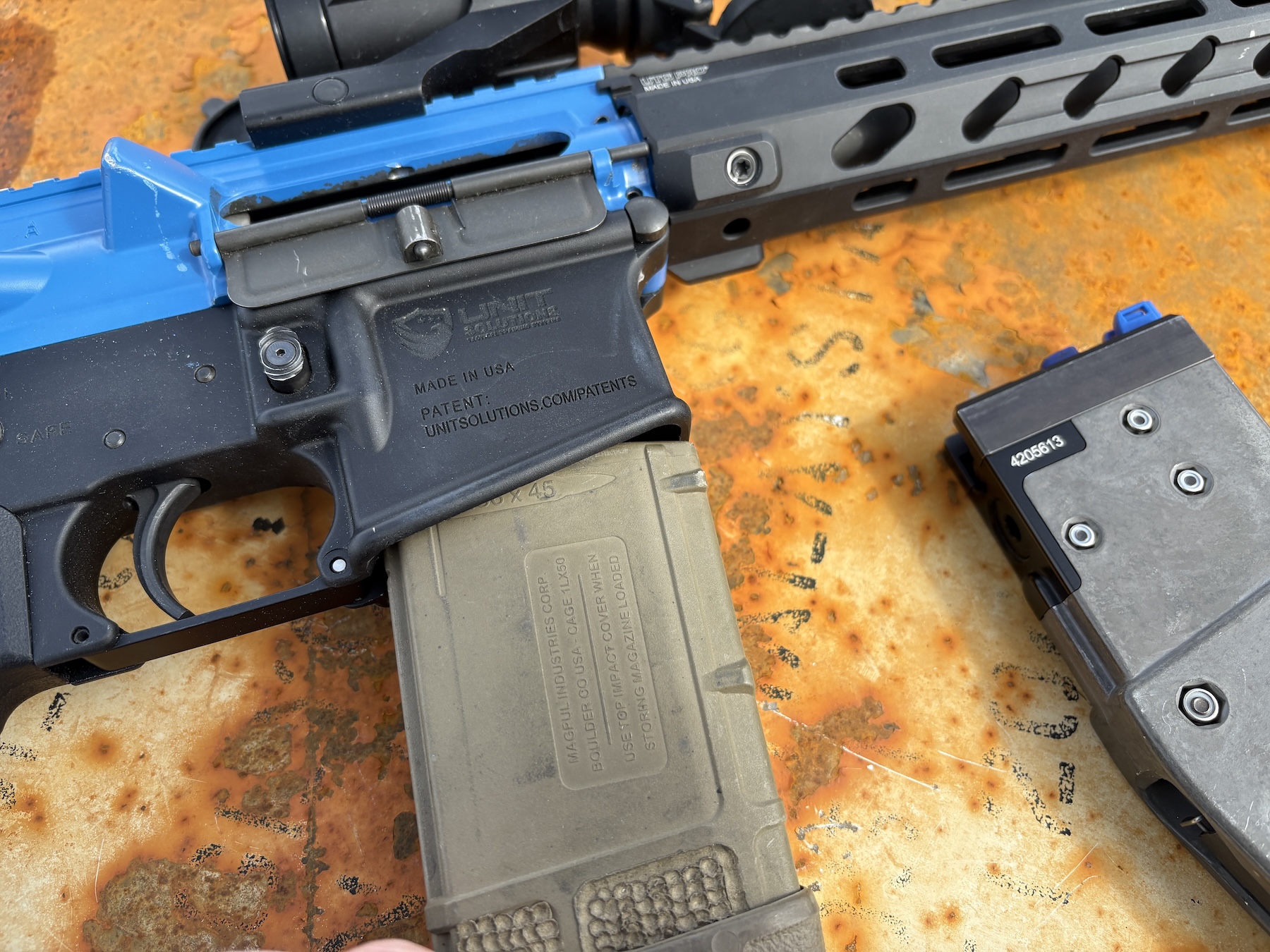
Because of dimensional changes, neither the PMag nor a UTM magazine will fit into the magazine well.
Other subtle differences and dimensional changes prevent the loading of live ammunition rather than minimize it.
While not immediately obvious, one is the magazine well. Theirs is just smaller enough that I could not insert magazines built for live ammunition or NLTA.
Unit Solutions features a proprietary all-metal magazine. They have tested those magazines to 300 drops from five feet high without failure, a Defense Department standard.
Next is the bolt face—it is plastic and hollow to mate with the 8mm spherical projectile (ball). The four lugs seat in the chamber opening, which does not have the ramps for feeding live ammunition.
The underside of the charging handle is solid, so a real bolt carrier group could not be inserted into the upper receiver.
Takedown
Field striping the UNIT4 will be familiar to anyone who has spent time inside an M4. The re-assembly process has an additional step. There is a ridge on the buffer face that the rear of the bolt carrier needs to bypass. A downward smack on the upper receiver addresses this, as would pushing back on the buffer face with a thin, flat tool.

The fire control group is very similar to that of an M-4—it even has full auto capability. Notice the difference with the hammer design.
TPaks
Rather than loading individual rounds like other NLTA options, the Unit magazine takes a cartridge that holds a CO2 canister and thirty (30) 8mm plastic projectiles. Once the cartridge is in the magazine, the bottom door is closed. It is then levered shut, puncturing the CO2 canister. After the magazine is inserted and seated, it functions akin to a traditional magazine. It will lock the bolt to the rear after the magazine is emptied.
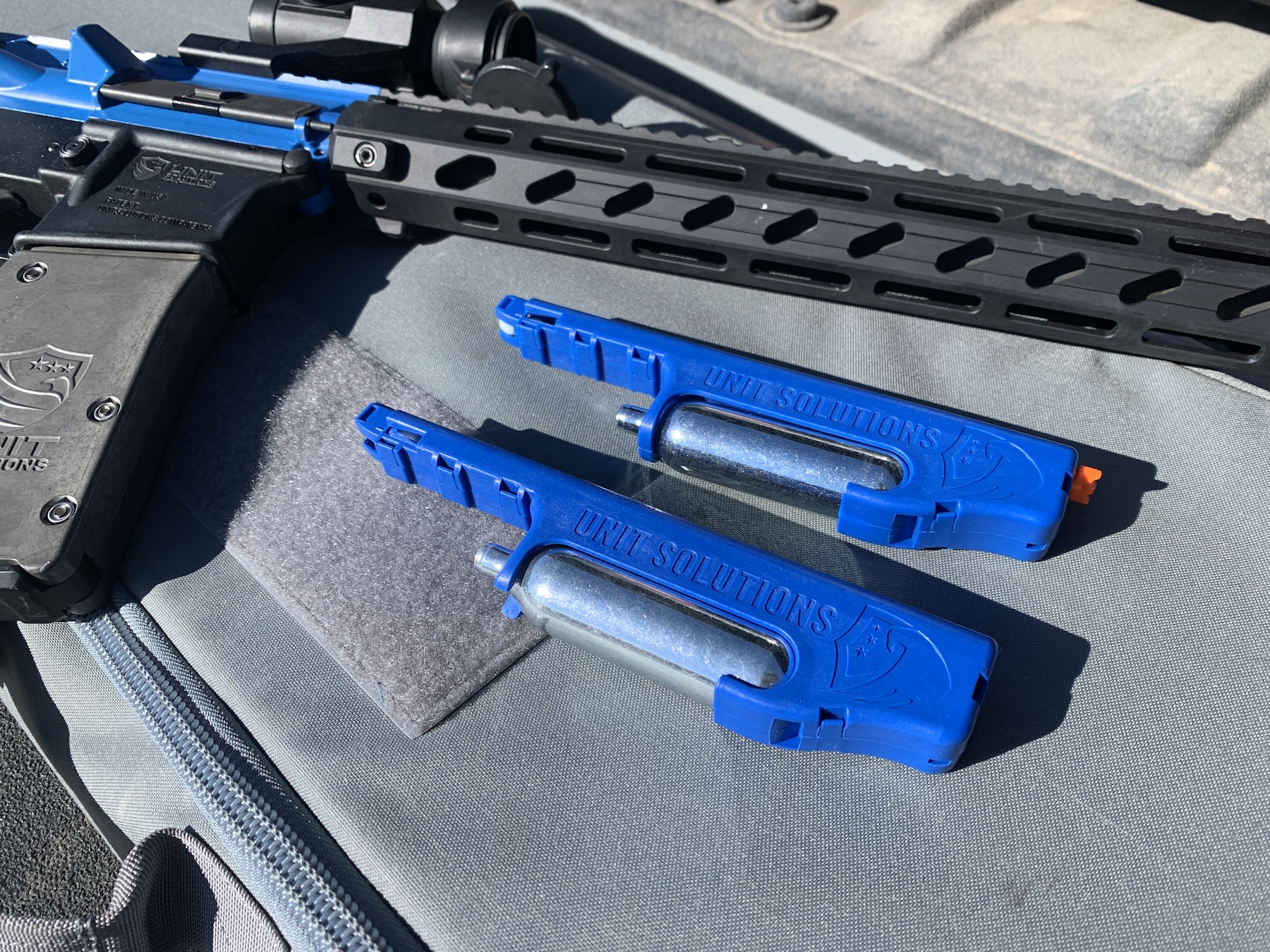
Loaded (top) and Reloadable TPaks. The orange tab is on those loaded by Unit Solutions. You remove the tab when inserting it into the magazine body.
Each TPak ammunition insert comes pre-loaded with thirty (30) projectiles. The reloadable version is good for ten uses. The reloading kit includes replacement CO2 canisters and pellets.
The system has Marking and Non-Marking rounds. For force-on-force, the marking rounds give a visible indicator of hits—the accuracy of both the system and the shooter is a concern in many places. The non-marking rounds let you use it with paper or cardboard targets in a variety of locations.
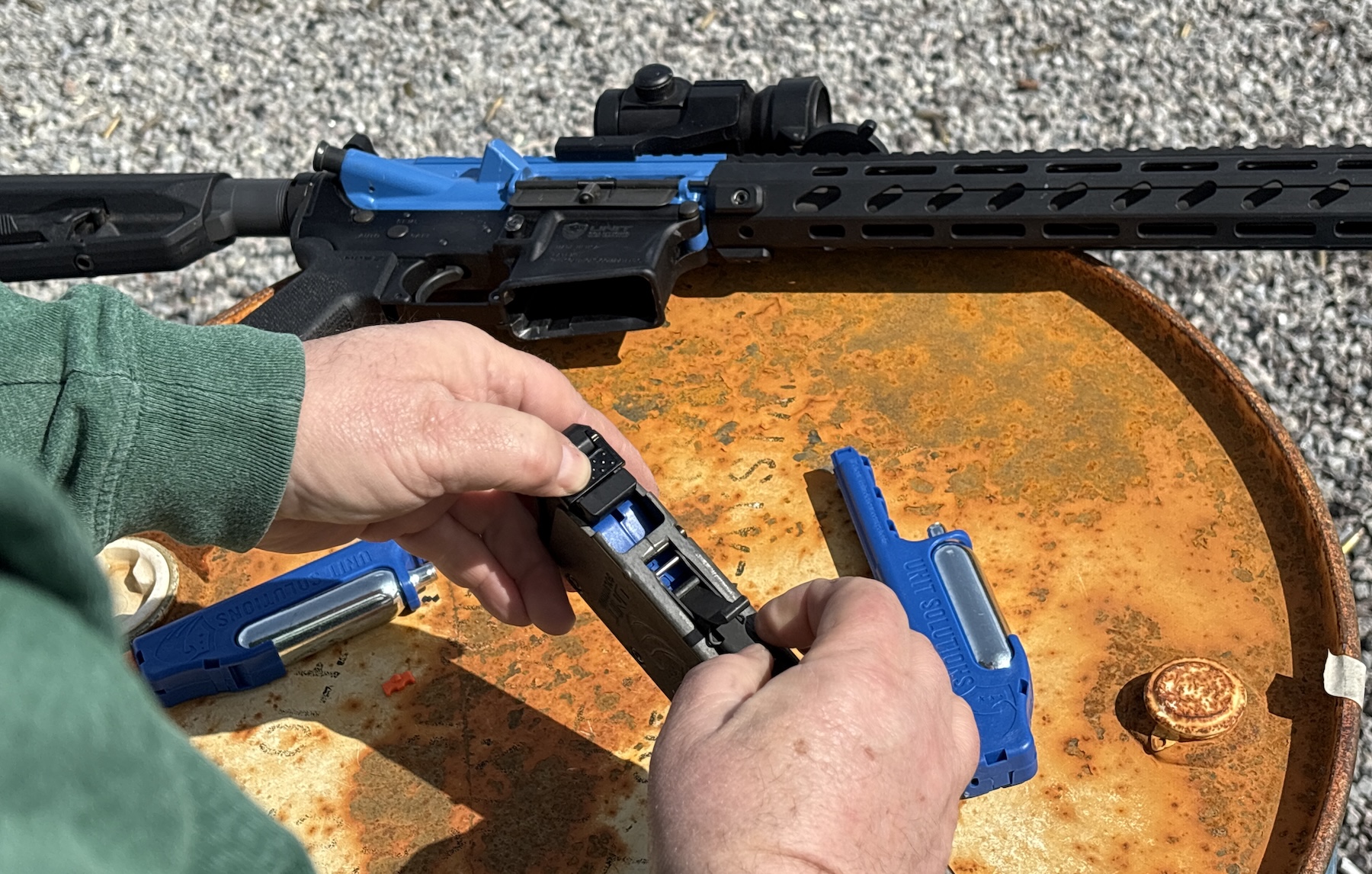
First step in removing the empty TPak, it to open the latch before pulling it down. That exposes the TPak.
Both projectiles have a listed muzzle velocity of 375-425 feet per second (fps) and an effective range of 35 meters.
As I could not chronograph the projectiles, I compared them to other available training and less lethal munitions by shooting into two cardboard targets separated by the thickness of furring strips. While non-scientific, there were no obvious differences between the projectiles. Your Unit4 can be used in apartments, houses, and offices.
Blu Bearing Solutions, owned by a retired member of a special mission unit, is heavily using the Unit4. They are including the cost of the projectiles and the use of a Unit4 in their class fees.
Protective Equipment?
With other products, full protective equipment is required. What about the Unit4? It only requires eye protection and a mouth guard. Because less equipment is required, it can be used a lot more often.
Note: ALL training area safety protocols still apply!
Unit Solutions debuted a Glock-like training handgun at SHOT. Look for it in the 3rd quarter.
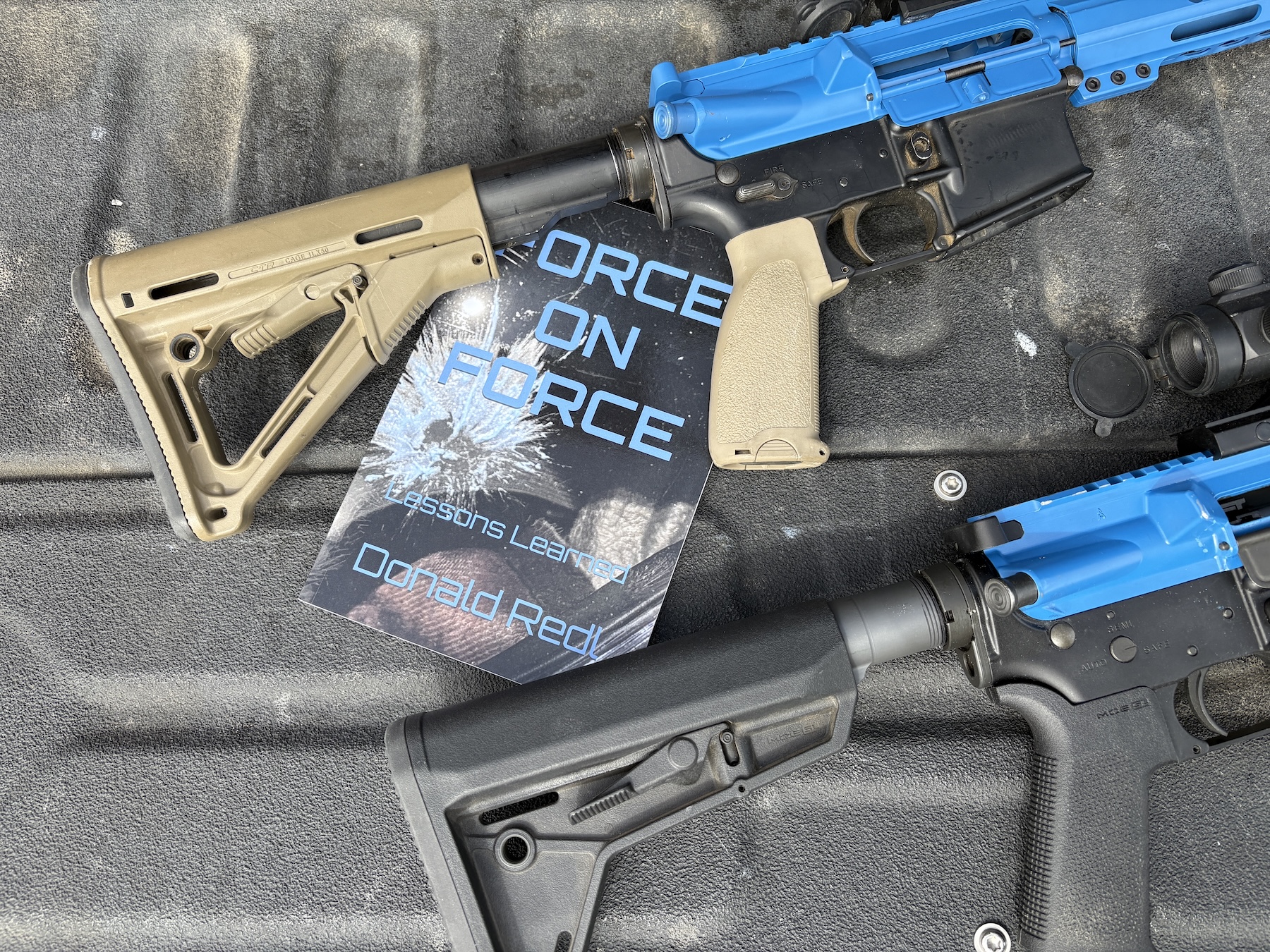
Force-on-force training is a must to prepare our students for actual encounters. It must be competently and safely presented. That book is an addition to your instructor training. My UTM compatible upper still requires a “live” lower, while the Unit4 is a complete product.
If you want more information on training development after your instructor’s class, consider reading. Specifically, consider Ken Murray’s book Training at the Speed of Life and Donald Redl’s more recent offering Force on Force—Lessons Learned.
Final Thoughts
While the cost of the complete platform is initially higher than buying (or converting) an NLTA-only upper receiver, the significantly cheaper “ammunition” and durability will make up for it.
Since getting the UNIT4, I’ve had multiple range sessions and runs through an NLTA-only shoot house. I can positively compare it to a variety of NLTA carbines for different manufacturers – including my own NLTA upper. Given those experiences, there is no question in my mind that a complete, purpose-built system (that cannot chamber, let alone fire, any live ammunition) for training the practical application of the carbine in any realistic setting. Unit 4 will absolutely let you train on the decision-making and thinking side of this subject.
UNIT4’s retail price ranges from $999 to $1699; magazines are $130 each, and TPaks with 300 rounds are $88.


 (+4 rating, 4 votes)
(+4 rating, 4 votes)
